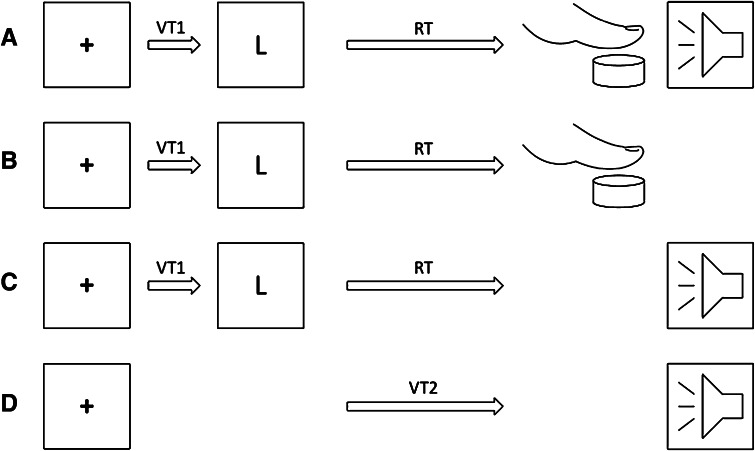Fig. 1.
Experimental procedure. a Cue Motor Tone (CMT) condition. Each trial was initiated with a fixation cross which after a variable delay (VT1) changed to a cue to press the left (L) button (50 % of trials were left and 50 % right). After the duration of the participants response time (RT), the button was depressed by the thumb, and a tone was played to the ear that corresponded to the cued side. b Cue Motor (CM) condition. The CM condition was identical to the CMT condition except for the absence of the tone. c Cue Tone (CT) condition. This condition was identical to the CMT condition except that the participant was instructed at the beginning of the block not to respond to the cue. The RT (time between the cue and the tone was set to be the average of the RT in the preceding CMT block). d Tone only (TO) condition. Tones were played at variable intervals (VT2) in the presence of the fixation cross

